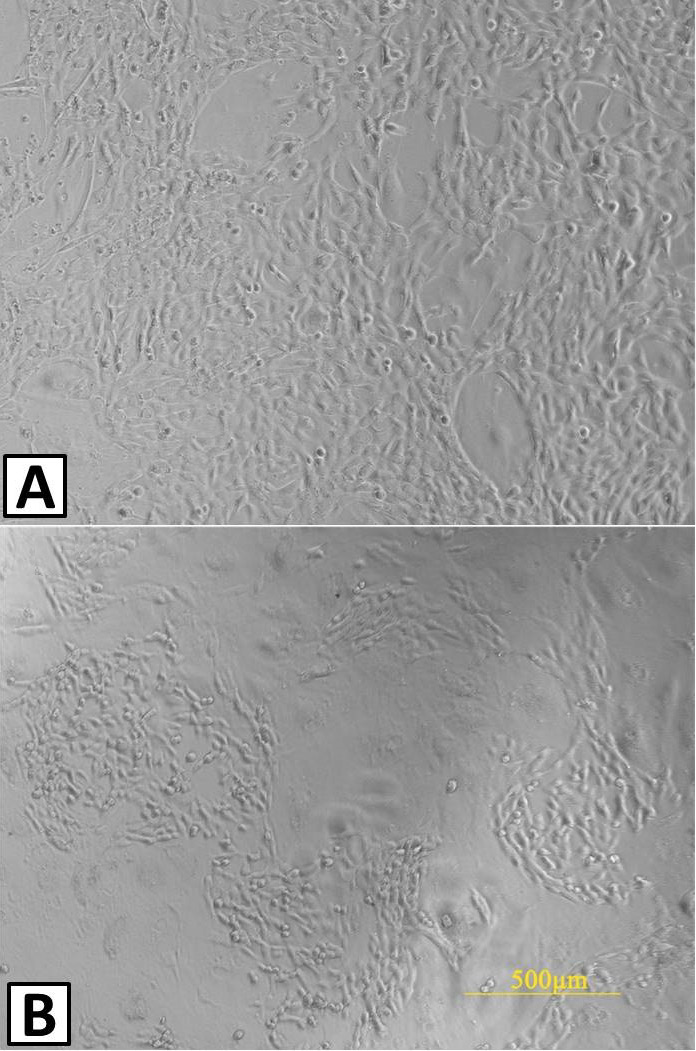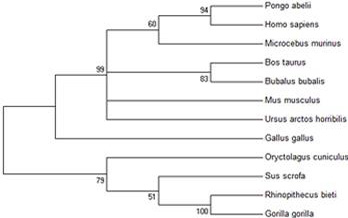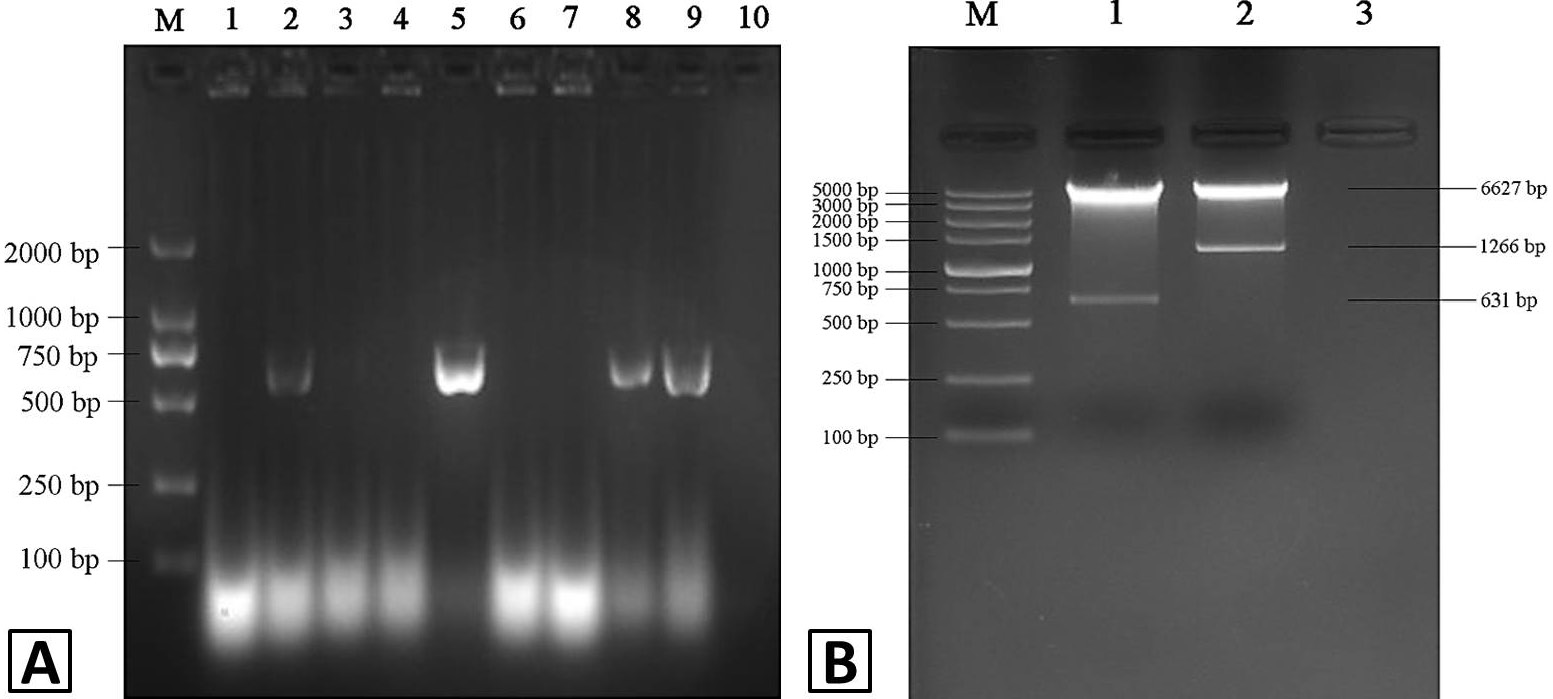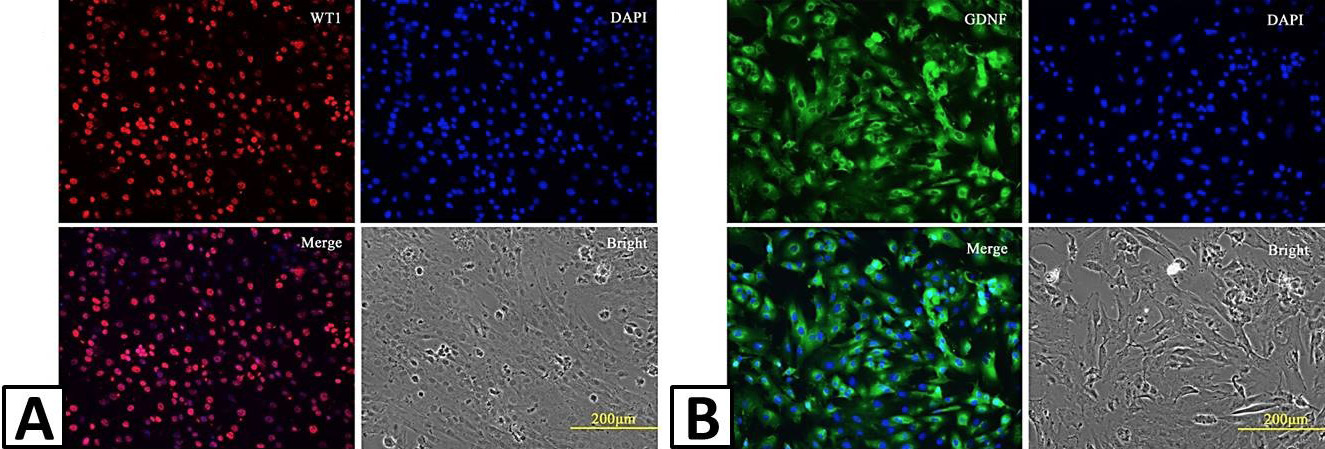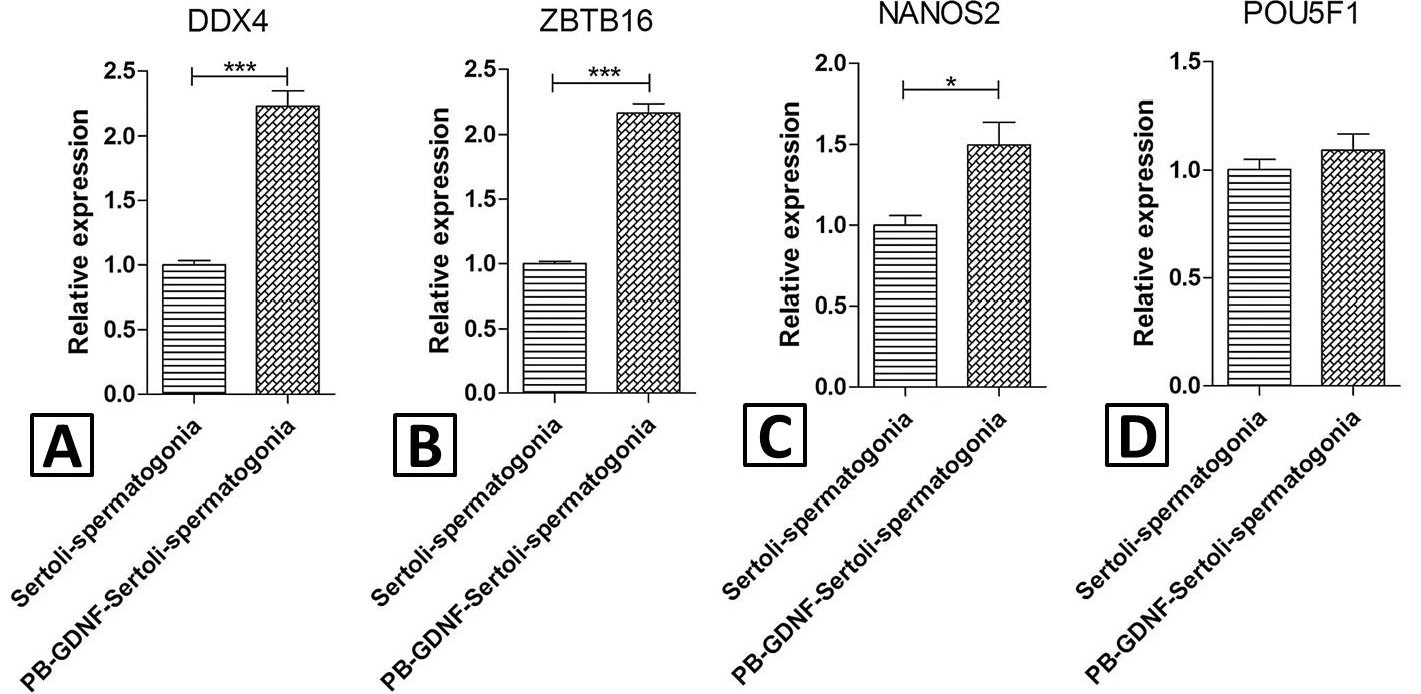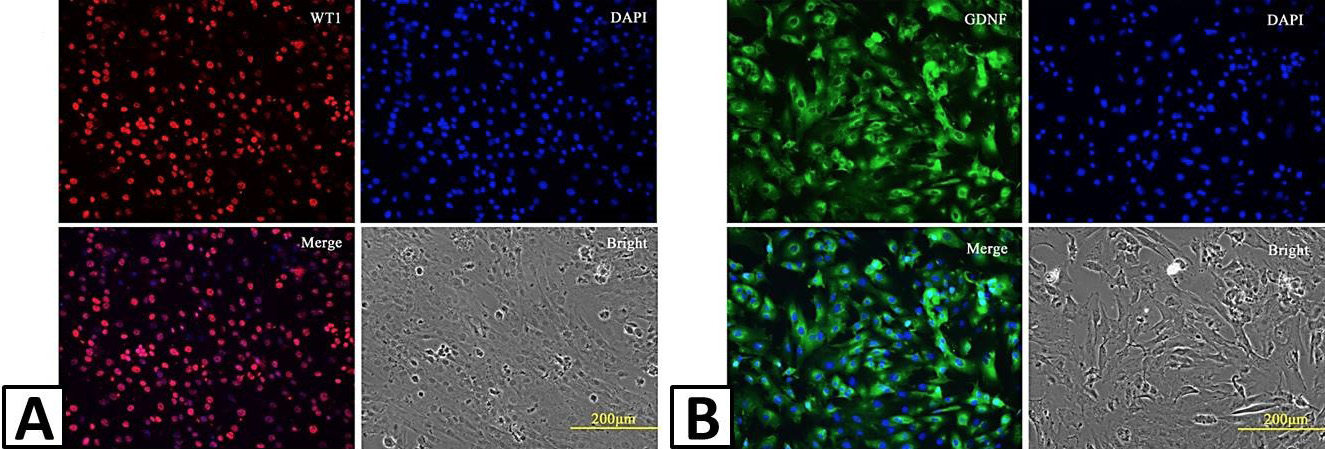Overexpression of GDNF can Effectively Maintain the Pluripotency of Buffalo Spermatogonia In Vitro
Overexpression of GDNF can Effectively Maintain the Pluripotency of Buffalo Spermatogonia In Vitro
Tingting Li, Shuangshuang Geng, Long Xie, Huiyan Xu, Aolin Luo, Pengwei Zhao, Huan Yang, XingWei Liang, YangQing Lu, XiaoGan Yang* and KeHuan Lu*
MEFs and Sertoli cells were used as feeder layers to culture buffalo spermatogonia. Buffalo spermatogonia cultured on MEFs (A) and on Sertoli cells (B). Scale bars=500 μm.
Cloning of the buffalo GDNF gene and construction of the T vector. A: M, DL2000; 0, cDNA; 1, H2O; B: M, DL2000; 0, H2O; 1-5, monoclonal colonies.
Phylogenetic tree of the GDNF sequences in various mammalian species.
Construction of the PB-GDNF plasmid. A: M, DL2000; 1-9, monoclonal colonies; 10, H2O; B: M, DL5000; 1, PB 513B-I plasmid; 2, PB-GDNF plasmid; 3, H2O; 1-5, monoclonal colonies.
Immunofluorescence staining of Sertoli cells using WT1 marker (A) and GDNF marker (B) antibodies. Scale bars=200 μm.
Brief map of the PB-GDNF plasmid.
Overexpression of the GDNF gene in buffalo Sertoli cells. After 15 days of transfection, almost all cells expressed green fluorescent protein (A). The GDNF gene expression in PB-GDNF-Sertoli cells was significantly higher than that in control Sertoli cells (B). The GDNF gene secretion in PB-GDNF-Sertoli cells was significantly higher than that in control Sertoli cells (C). Scale bars=500 μm.
Quantitative-PCR analysis of buffalo spermatogonia cultured on either experimental group cells (PB-GDNF-Sertoli) or control group cells (Sertoli with human GDNF) in vitro. Histograms showing the quantitative-PCR analysis of the germline-related marker DDX4 (A), the buffalo spermatogonia marker ZBTB16 (B), the inchoate buffalo spermatogonia marker NANOS2 (C) and the pluripotency marker POU5F1 in buffalo spermatogonia cultured on either PB-GDNF-Sertoli Cells or control Sertoli Cells (with human GDNF).
Immunofluorescence staining of Sertoli cells using WT1 marker (A) and GDNF marker (B) antibodies. Scale bars=200 μm.







